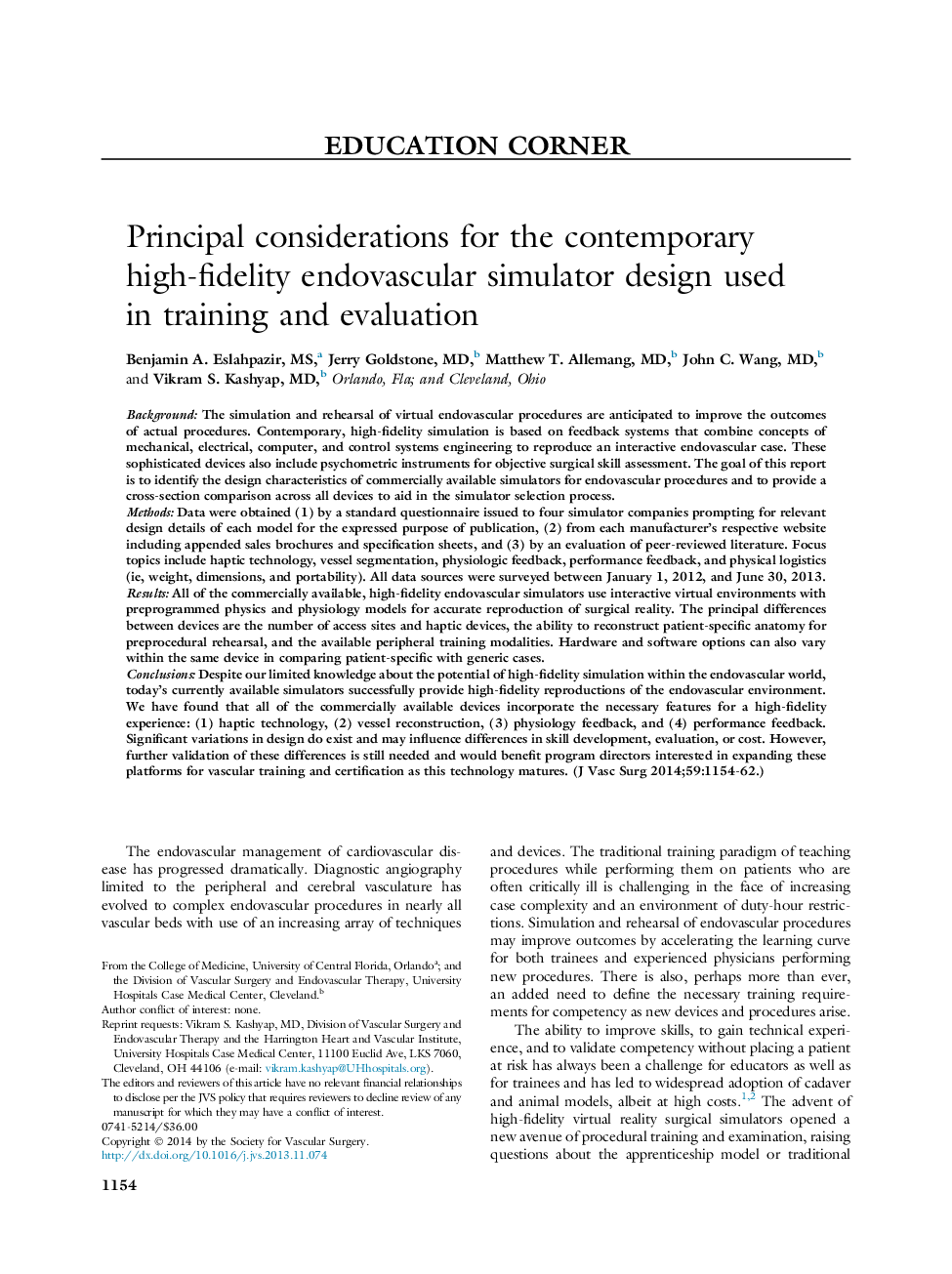| کد مقاله | کد نشریه | سال انتشار | مقاله انگلیسی | نسخه تمام متن |
|---|---|---|---|---|
| 5995374 | 1179838 | 2014 | 9 صفحه PDF | دانلود رایگان |
BackgroundThe simulation and rehearsal of virtual endovascular procedures are anticipated to improve the outcomes of actual procedures. Contemporary, high-fidelity simulation is based on feedback systems that combine concepts of mechanical, electrical, computer, and control systems engineering to reproduce an interactive endovascular case. These sophisticated devices also include psychometric instruments for objective surgical skill assessment. The goal of this report is to identify the design characteristics of commercially available simulators for endovascular procedures and to provide a cross-section comparison across all devices to aid in the simulator selection process.MethodsData were obtained (1) by a standard questionnaire issued to four simulator companies prompting for relevant design details of each model for the expressed purpose of publication, (2) from each manufacturer's respective website including appended sales brochures and specification sheets, and (3) by an evaluation of peer-reviewed literature. Focus topics include haptic technology, vessel segmentation, physiologic feedback, performance feedback, and physical logistics (ie, weight, dimensions, and portability). All data sources were surveyed between January 1, 2012, and June 30, 2013.ResultsAll of the commercially available, high-fidelity endovascular simulators use interactive virtual environments with preprogrammed physics and physiology models for accurate reproduction of surgical reality. The principal differences between devices are the number of access sites and haptic devices, the ability to reconstruct patient-specific anatomy for preprocedural rehearsal, and the available peripheral training modalities. Hardware and software options can also vary within the same device in comparing patient-specific with generic cases.ConclusionsDespite our limited knowledge about the potential of high-fidelity simulation within the endovascular world, today's currently available simulators successfully provide high-fidelity reproductions of the endovascular environment. We have found that all of the commercially available devices incorporate the necessary features for a high-fidelity experience: (1) haptic technology, (2) vessel reconstruction, (3) physiology feedback, and (4) performance feedback. Significant variations in design do exist and may influence differences in skill development, evaluation, or cost. However, further validation of these differences is still needed and would benefit program directors interested in expanding these platforms for vascular training and certification as this technology matures.
Journal: Journal of Vascular Surgery - Volume 59, Issue 4, April 2014, Pages 1154-1162
